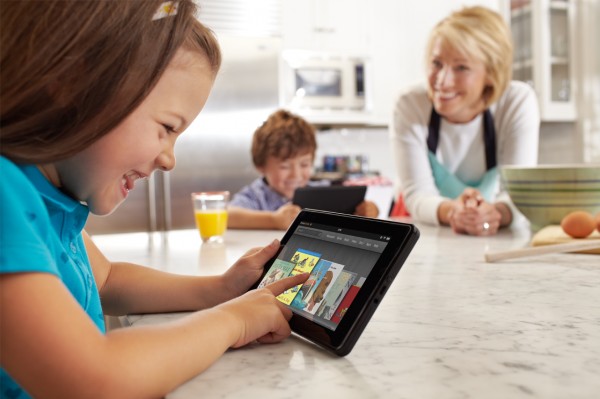Kindle Fire sales are still hot

Wow, what a swirl of good-news/bad-news last week for the media tablets aimed at the ereader market. As it turns out, the roller-coaster ride continues this week.
comScore reported that the Kindle Fire from Amazon generated far more Internet activity in February than any other Android media tablet. Then a few days later, Microsoft dumped $300 million into a Barnes & Noble ebook venture, a move spurred in part by the success of the bookseller’s media tablet, the Nook Tablet.
I wrote a column explaining why the Kindle Fire and the Nook Tablet, the first- and third-highest selling Android tablets in 2011, respectfully are so successful -- and what that means for hardware vendors who want to make it in the tablet market.
And then the roller coaster began hurtling earthward.
Target confirmed rumors that it is tossing Amazon’s Kindle line-up out of its chain of department stores. Target was coy as to exactly why, though fellow writer Ed Oswald offered up a few possible explanations.
I suspect it has to do with Target’s new pilot program that will put Apple boutiques in 25 of its stores. (That’s possibility #2 in Ed’s article if you’re scoring at home.) Apple knows what powerful draw its products generate and exploits that in its relationships up and down the supply chain. It's why Verizon invested millions two-and-a-half years ago to elevate Android: to level the playing field in the smartphone market by giving iPhone a legitimate competitor. It’s also why Verizon is looking to prop up Windows Phone during this year’s selling season.
And then late last week, Joe Wilcox raised another possible reason: that Target dumped the Kindle Fire because it’s no longer selling. He pointed to first-quarter data from IDC that estimated sharply lower shipments of the Kindle Fire in the year’s first quarter -- 700,000 units down from 4.7 million.
I find it difficult to believe that Target, a retailer well accustomed to consumer buying patterns, would toss Amazon due to a seasonal letdown in sales. As it turns out, the IDC report, while technically accurate, is a bit misleading.
Kindle Fire shipments, or deliveries by Amazon to thousands of stores as well as to Amazon’s own warehouses, fell off a cliff, not actual sales. That’s normal for the year’s first quarter -- Apple’s quarter-on-quarter shipments also dipped, as did total tablet shipments, according to IDC. You would expect Kindle Fire shipments to fall far faster than the industry during that time, because the fourth quarter was the Kindle Fire’s inaugural quarter, so retailers had to build up their holiday stock from scratch.
Sales, actual purchases of Kindle Fires by consumers, were seasonally strong in the first quarter, according to NPD. Consumers bought about 1.8 million Kindle Fires in the first quarter, compared to 3.8 million in the fourth quarter of 2011. That’s seasonally down, yes. But the Kindle Fire still sold “pretty darn well” in the first quarter, says NPD’s Stephen Baker.
So let’s see if we can’t get Kindle Fire news back on an even keel. One thing’s for sure: all this perceptual yo-yo’ing doesn’t change the fact that the Kindle Fire is a well-designed and well-positioned tablet that is successful because it sidesteps the iPad rather than challenging it head-on, like so many other wannabe’s in this market.
On the other hand, the Kindle Fire’s success may be why Apple has painted a target on its back -- and why it isn’t welcome back at Target.
 Mike Feibus is principal analyst at TechKnowledge Strategies, a Scottsdale, Ariz., market research firm focusing on client technologies. You can reach him at mike at techknowledge-group dot com.
Mike Feibus is principal analyst at TechKnowledge Strategies, a Scottsdale, Ariz., market research firm focusing on client technologies. You can reach him at mike at techknowledge-group dot com.
